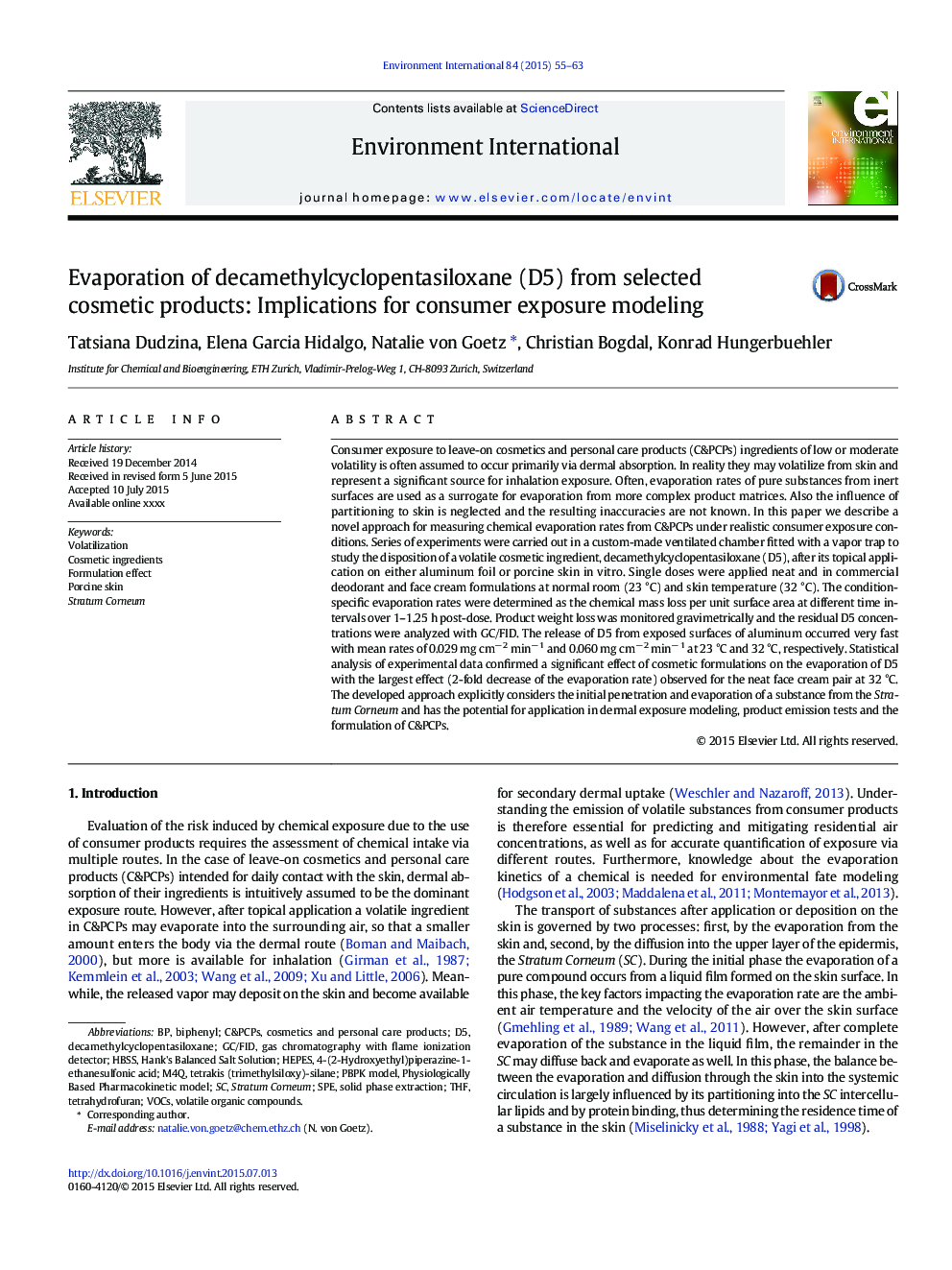| Article ID | Journal | Published Year | Pages | File Type |
|---|---|---|---|---|
| 6313435 | Environment International | 2015 | 9 Pages |
Abstract
Consumer exposure to leave-on cosmetics and personal care products (C&PCPs) ingredients of low or moderate volatility is often assumed to occur primarily via dermal absorption. In reality they may volatilize from skin and represent a significant source for inhalation exposure. Often, evaporation rates of pure substances from inert surfaces are used as a surrogate for evaporation from more complex product matrices. Also the influence of partitioning to skin is neglected and the resulting inaccuracies are not known. In this paper we describe a novel approach for measuring chemical evaporation rates from C&PCPs under realistic consumer exposure conditions. Series of experiments were carried out in a custom-made ventilated chamber fitted with a vapor trap to study the disposition of a volatile cosmetic ingredient, decamethylcyclopentasiloxane (D5), after its topical application on either aluminum foil or porcine skin in vitro. Single doses were applied neat and in commercial deodorant and face cream formulations at normal room (23 °C) and skin temperature (32 °C). The condition-specific evaporation rates were determined as the chemical mass loss per unit surface area at different time intervals over 1-1.25 h post-dose. Product weight loss was monitored gravimetrically and the residual D5 concentrations were analyzed with GC/FID. The release of D5 from exposed surfaces of aluminum occurred very fast with mean rates of 0.029 mg cmâ 2 minâ 1 and 0.060 mg cmâ 2 minâ 1 at 23 °C and 32 °C, respectively. Statistical analysis of experimental data confirmed a significant effect of cosmetic formulations on the evaporation of D5 with the largest effect (2-fold decrease of the evaporation rate) observed for the neat face cream pair at 32 °C. The developed approach explicitly considers the initial penetration and evaporation of a substance from the Stratum Corneum and has the potential for application in dermal exposure modeling, product emission tests and the formulation of C&PCPs.
Keywords
VOCsDecamethylcyclopentasiloxaneHEPESHBSSTHFSPE4-(2-Hydroxyethyl)piperazine-1-ethanesulfonic acidGC/FIDSolid phase extractionBiphenylTetrahydrofuranVolatile organic compoundsStratum corneumHank's balanced salt solutionPBPK modelPhysiologically based pharmacokinetic modelCosmetic ingredientsVolatilizationPorcine skinGas chromatography with flame ionization detector
Related Topics
Life Sciences
Environmental Science
Environmental Chemistry
Authors
Tatsiana Dudzina, Elena Garcia Hidalgo, Natalie von Goetz, Christian Bogdal, Konrad Hungerbuehler,
